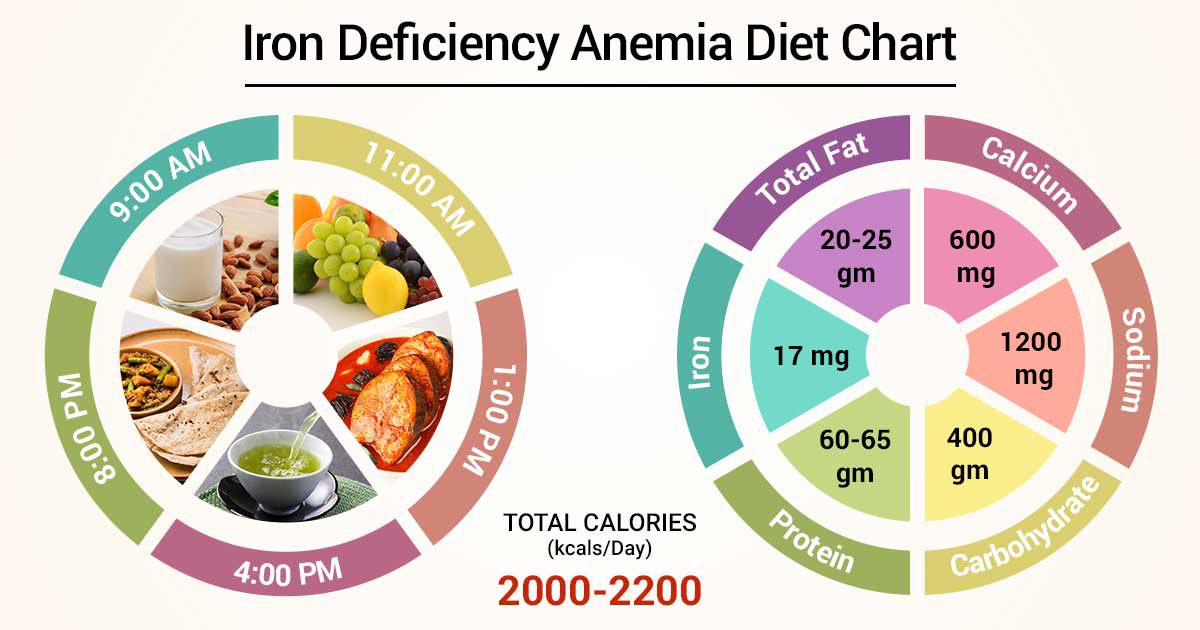Diet for anemia

A diet plan for iron deficiency anemia needs to include a healthy balance of heme and non-heme iron-rich foods, such as meat and poultry, seafood, iron-rich vegetables, nuts and seeds, and beans. It is also crucial to include foods that can improve the body’s absorption of iron and avoid foods that may interfere with this process.
Anemia can result from many factors, including a lack of iron in the diet and heavy menstruation.
Bleeding in the stomach and intestines can also cause iron deficiency anemia. This type of bleeding is sometimes a side effect of nonsteroidal anti-inflammatory drugs (NSAIDs). Or it may result from:
- ulcers
- piles
- swelling in the large intestine or esophagus
- certain cancers
Adding iron-rich foods to the diet can help treat anemia. A healthcare professional can advise about the kinds of foods to choose from and other ways to increase iron absorption.
The best diet for a person with anemia includes plenty of foods rich in iron and other foods that help the body to absorb iron. A person should also be aware of foods that can inhibit iron absorption.
The plan below was developed to show the type of healthy meals a person with anemia might include:
Breakfast
Option 1
Unsweetened oatmeal made with sprouted oats topped with raspberries, hemp seeds, and cacao nibs. Enjoy with a glass of iron-fortified orange juice.
Breakfast
Option 1
Unsweetened oatmeal made with sprouted oats topped with raspberries, hemp seeds, and cacao nibs. Enjoy with a glass of iron-fortified orange juice.
Option 2
Breakfast hash made with chickpeas, chicken sausage, mushrooms, sweet potatoes, and spinach.
Tea and coffee inhibit iron absorption, and people should not drink them with meals.
Lunch
Option 1
A bowl of beef chili, or a tuna burger, with a spinach salad.
Option 2
A bagel with smoked salmon, cream cheese, and spinach.
Dinner
Option 1
Lamb chops with boiled potatoes, steamed broccoli, and curly kale.
Option 2
A stew that includes kidney beans, chickpeas, black-eyed peas, tinned tomatoes, onions, red peppers, and garlic, topped with vegan or dairy-based cheese and a dollop of vegan or dairy-based yogurt.
Foods rich in iron
Fruits and vegetables
- watercress
- curly kale and other varieties
- spinach
- collard greens
- dandelion greens
- Swiss chard
- citrus fruits
- red and yellow peppers
- broccoli
Nuts and seeds
- pumpkin seeds
- cashews
- pistachios
- hemp seeds
- pine nuts
- sunflower seeds
Meat and fish
- beef
- lamb
- venison
- liver
- shellfish
- oysters
- shrimp
- sardines
- tuna
- salmon
- halibut
- perch
- haddock
Beans and pulses
- kidney beans
- chickpeas
- soybeans
- black-eyed peas
- pinto beans
- black beans
- peas
- lima beans
Foods to avoid
The following foods can interfere with iron absorption:
- tea and coffee
- milk and some dairy products
- foods that contain tannins, such as grapes, corn, and sorghum
- foods that contain phytates or phytic acid, such as brown rice and whole-grain wheat products
- foods that contain oxalic acid, such as peanuts, parsley, and chocolate
